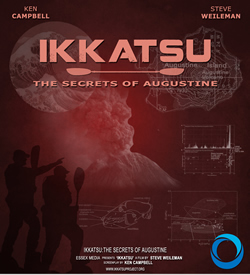As I wind down these updates (in unreal time), I’m getting my stuff ready for the next leg. There is gear to be packed – again – and itineraries to get pieced together. The next section, although shorter than the last, may be my favorite part of the roadless coast. I have only paddled it once before and I am eagerly anticipating getting back. It doesn’t have the memorials or the petroglyphs that the last section did and although it does have a few caves, they are nothing like the ones at Cape Flattery; still, there are more stacks and pillars here, the beach at Mosquito Creek should have decent surf and the paddle up Goodman Creek is one of the most amazing trips on the entire Olympic coast. So, I guess you could say that I’m looking forward to it. Now, looking backward…
July 8, 2012
I’m up early, brewing a pot of coffee, just soaking in the morning. The weather has changed. The breeze is cool and the sky is blocked with gray clouds. It’s not raining yet, but it doesn’t seem like it’s too far away.
There are two surveys on the schedule today, one up near the Norwegian Memorial and another here at Cedar Creek. There’s a chance we’ll camp tomorrow night at or near the Chilean Memorial, but with the weather coming up a little rowdier, we may want to be able to go all the way into La Push a day early. Time will tell. Either way, we want to get these two surveys in the books.
After a few cups of joe, we start the hike north to the Norwegian Memorial, about a mile away. Along the route, we photograph a few different pieces of debris, kick through the kelp balls in search of glass floats and comb through the different categories of flotsam in our heads as we travel along. It’s becoming second nature now, to see the garbage on the shore, to hypothesize about where it came from, to try to understand what it will take to clean it up.
Once we arrive at the memorial, we take a few minutes to pay our respects. The way the story goes, the Prince Arthur, with a crew of 20, was en route to Port Blakely, WA, (or Esquimalt, BC – accounts differ), to pick up a load of lumber destined for Australia. It was January 2nd, 1903, and it was a stormy night along the coast. The boat’s crew, unaware of how close to shore they had been pushed by the wind and swells, and confused by lights they saw through the fog, never really knew what hit them. A series of waves battered the ship and although the crew initially tried to save her, the hapless vessel was eventually shattered on the reef, throwing all souls into the foam.
Two of the twenty survived. It fell to them to do the recovery of the bodies of their shipmates, to do the burying. The marker that stands today marks the graves of those who still lie there, in a common grave, wrapped in ship’s sails and buried with a Norwegian flag. We look out onto the reef and although we can see how the rocky expanse might demolish a wooden bark like the Prince Arthur, the calm seas beyond offer no hint of the violence that occurred on that night. It is quiet, serene… just like a cemetery.
We do a survey right in front of the memorial. It’s a big beach and once again, it is a stretch of shore that is frequented by hikers, rather than one of our more remote locations. Still, it’s valuable to get the numbers onto the paper, to quantify the pollution that sits on the sand as if it belongs here. It does not belong here, and if it ever gets to the point that we accept that it is here, that there is some level of plastic beach infusion that is tolerable, then the battle will have been lost.
Later in the afternoon, we do another survey down at Cedar Creek. There is more driftwood here and we have to shift quite a few logs to get to the debris underneath, pulling bits of plastic out from under the rocks and sand, tallying up the totals. There are some lighters, a toothbrush, shaving razor and hundreds of other items not so easily identified, all of them entered on the forms.
In the night, just before bed, I sit by the fire alone. The others turned in a while before and I sit by the fire and listen to the sounds of the night. It is a primal place, here on the edge of the continent. I can hear the creek burbling to the sea fifty feet away in the darkness. The constant sound of the waves on the sand, the fresh breeze blowing through the high limbs in the forest behind me, the crackle of the cedar as the flames turn to shining coals: all these and more contribute to the timeless feel of a wild beach.
I think about how many times, for how many centuries, this scene has played out here on this portion of the coast. And how long it will continue to play after my time has passed. The continuum of this brief, sweet life is not often captured in a moment, but moments like this one show it all too clearly.














